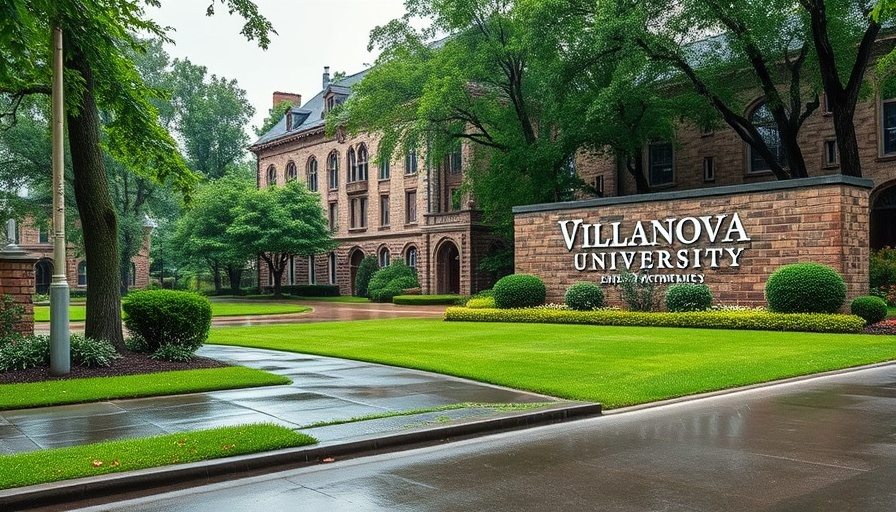
Villanova University Incident: A Seeking Clarity Amidst Panic
On August 21, 2025, Villanova University, located in the affluent suburbs of Philadelphia, became the center of attention for all the wrong reasons as an active shooter report sent ripples of fear across the campus. Students received urgent alert texts instructing them to lock and barricade doors, a shocking wake-up call just days before the start of the new academic year.
Understanding the Response: Police Actions and Community Guidance
The alarming report prompted a swift response from local police, with broadcasts urging students and nearby residents to shelter in place. Videos on social media captured frantic moments as groups of students rushed into buildings to find a safe haven. Emergency services were on standby, and there was an attempt to control the narrative amidst rising public anxiety. Such incidents lend insight into the preparedness and protocols that universities have in place, reflecting the grim reality of safety in educational institutions today.
Impact of Educational Institutions’ Safety Protocols
This incident at Villanova raises significant questions about campus safety measures and emergency response plans. As students prepared for the upcoming orientation week, fears of gun violence overshadowed what should have been a time of excitement. Many universities have already established strong safety protocols, particularly in response to increased gun violence in American schools. The effectiveness of these protocols cannot be overstated, as their timely implementation can save lives in chaotic situations.
The Role of Communication in Crisis Management
Effective communication during emergencies plays a pivotal role in safeguarding individuals. The Villanova alert system prompted students to seek shelter, yet incidents like these highlight the necessity for continuous improvement in emergency communication strategies. As observed, communities and institutions must establish protocols that not only inform but also offer clarity and supportive resources for affected individuals. This incident underscores the fundamental importance of communication as a tool for safety and reassurance.
A Glimpse into the Psychological Impact of Such Incidents
The fear and confusion surrounding active shooter incidents can leave lasting psychological scars on students. Many may find it challenging to adjust emotionally after such a traumatic event. Support services and mental health resources must be readily available, as the transition into academic life becomes daunting in the aftermath of violence. Institutions would do well to prioritize the psychological well-being of their students, providing counseling and support mechanisms tailored to address the emotional fallout of such experiences.
Local Context: The Villanova Community Reaction
As the situation unfolded, local communities remained on alert. The proximity of Villanova to Lower Merion and Radnor Townships added layers to public concern. Residents expressed their shock on social media, sharing their worries and support for the students affected. This community’s reaction serves as a reminder of the interconnectedness of local areas, where education, safety, and community efforts intertwine in the overall well-being of society.
Future Predictions and Trends in Campus Safety
The road ahead will require a collective effort from educational institutions to invest in safety mechanisms and best practices. As schools gear up for an academic year amid heightened concerns about gun violence, trends may lead to an increased emphasis on not only physical security measures but also on community building and mental health resources. Furthermore, discussions about gun control legislation and policy reform are likely to intensify, shaping the future landscape of safety in schools and universities.
Conclusion: Remaining Vigilant and Prepared
In the wake of the incident at Villanova University, it is crucial for institutions and communities to learn and adapt. Students, families, and faculty are reminded that support systems must be strengthened, and proactive measures addressed. As we reflect on the implications of this situation, it serves as a clarion call for vigilance and preparedness as we work toward creating safer educational environments.
Above all, residents and stakeholders in Bakersfield and beyond should stay informed and engaged in discussions surrounding campus safety, demanding better from institutions while advocating for proactive measures to enhance community well-being.
 Add Row
Add Row  Add
Add 



Write A Comment